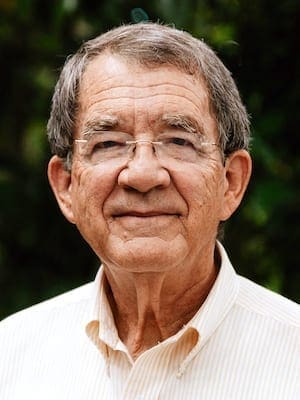News reports on the new book by Pope Benedict XVI on the infancy narratives of Jesus observe that he “debunks” some of the traditions associated with the nativity stories, such as animals in the stable and angels singing to the baby Jesus.
It is easy to understand how a nativity scene can be elaborated beyond the basics of the original narrative, with the shepherds of Luke’s version standing on one side of the manger and the wise men of Matthew’s account (all the way from the East by way of an audience with Herod) standing on the other side, with enough animals nearby and angels singing overhead to include all the available children.
Santa Claus has even been known to make an appearance in some portrayals of that holy night.
It is good to be reminded of the difference between the basics of a story and the traditions that naturally build up around it.
Students of the New Testament have long suggested that perhaps even the birth stories in Matthew and Luke may themselves be part of that developed tradition, since the earlier Gospel of Mark and the still earlier letters of Paul do not mention Jesus’ birth.
The question of who the “real” Jesus is, and who the Jesus portrayed in the recorded experience of his followers is, has produced many and varied responses.
The occasional news reports of the deliberations of the Jesus Seminar, whose members discuss the relative originality of the sayings and deeds of Jesus, often spark controversy with their suggestions of which sayings of Jesus are “authentic” and which ones may be literary creations of the early Christian community recorded by the gospel writers.
Some responses are quite negative toward the suggestion that any of the Gospel accounts of Jesus’ deeds and sayings may be creations of his followers, who experienced his presence in life-changing ways.
As one student put it some years ago, “Of course these are the actual words of Jesus. They’re right here in red in my Bible.”
As helpful as it is to discern the difference between the features of a biblical story and the natural lore that appears later, we are still left with the question of who the “real” Jesus is.
Is the Jesus of subsequent experience and reflection less “real” than the mostly inaccessible “Jesus of history”?
Maybe the question has to do more with what we consider “real” to be.
Some have found it helpful to think of the gospel accounts of Jesus as portraits rather than photographs.
This distinction reflects the difference between a photograph, which is an exact image that has come through the camera’s lens, and a portrait, which is a mixture of the subject and the perception and experience of the artist.
Which is more “real” – the factually accurate photograph or the portrait whose nuanced brush strokes can reflect qualities of character beyond surface appearance?
Let’s consider an everyday example:
If you want to know who my father was, you could find the birth records of Forsyth County, Ga., and learn that he was born on March 1, 1912.
School records would show where and when he graduated from high school. Employment records, tax records and other documents could provide additional information that identify the “facts” about his life.
But if you want to know the “real” identity of my father, my sister and I are the only ones who can really provide that.
Now, what we may know about all the facts of his life may be a little sketchy, and some of them may not even be accurate, because we have not considered them to be important enough to record or remember.
But we can talk at great length about who our father was in ways that no one else can, and certainly in ways that historical records by themselves cannot.
If you really want to know who he was, would you rather have the kind of information that accurate historical records show, or the kind of authentic testimony that personal experience can reveal?
In some ways, this is the situation we face with the gospels and their portraits of Jesus.
Since these records we have of Jesus are provided by the community that experienced him and believed him to be a personal disclosure of the very nature of God, it seems reasonable to assume that what we have is both a refined memory of words and deeds and an expression of the faith of a community that became an extension of his incarnation.
Maybe the real Jesus is the one who comes to us mediated through centuries of lives transformed by his disclosure of God’s order for life on both the personal and communal level.
The symbols of their testimony, whether they be a no-vacancy inn, a manger or a heavenly choir, undergird the profound theological depth of what they were proclaiming about the experience.
If we literalize those symbols or cast them aside as “unreal” and irrelevant, we deprive them of their power as models by which to re-symbolize our own experience with the transforming reality of the incarnation.
Colin Harris is professor of religious studies at Mercer University and a member of Smoke Rise Baptist Church in Stone Mountain, Ga.
Professor emeritus of religious studies at Mercer University, a member of Smoke Rise Baptist Church in Stone Mountain, Georgia, and the author of Keys for Everyday Theologians (Nurturing Faith Books, 2022).

